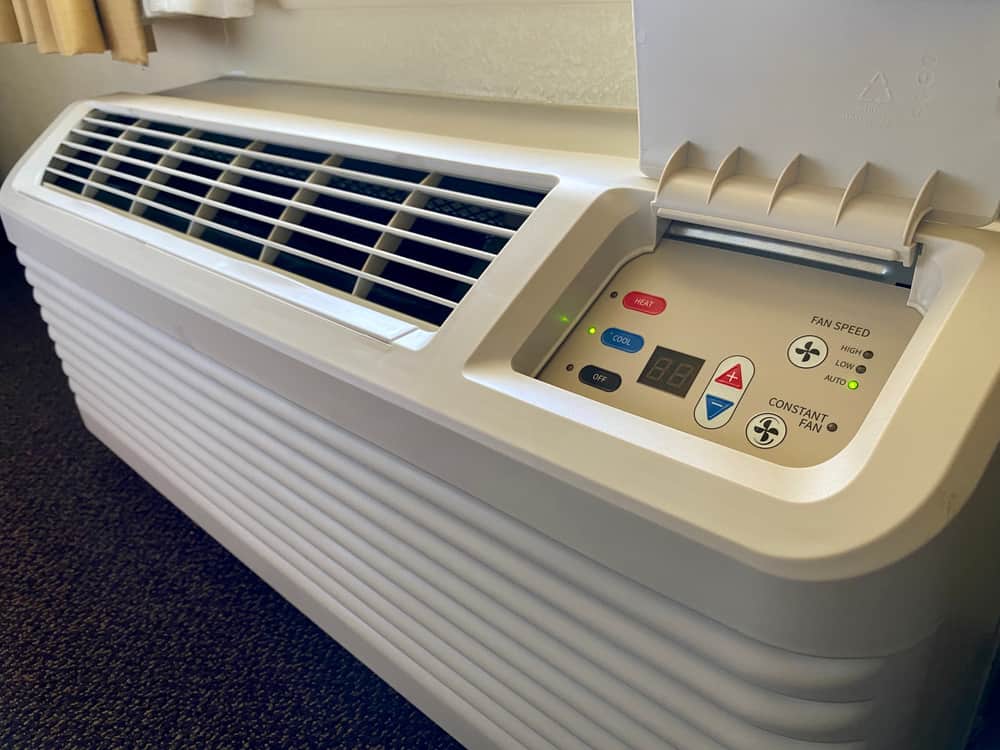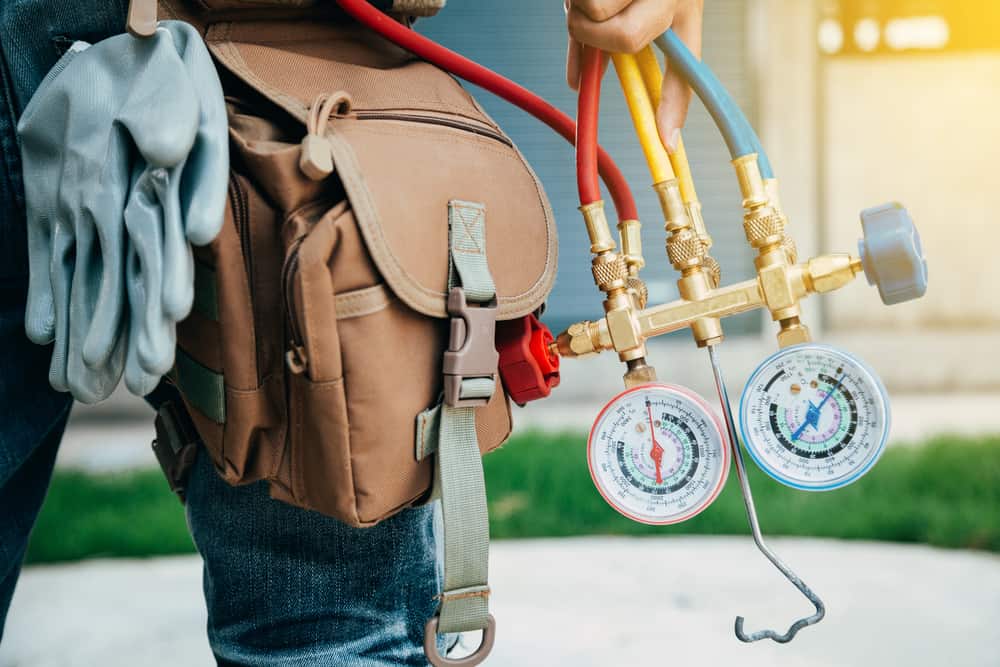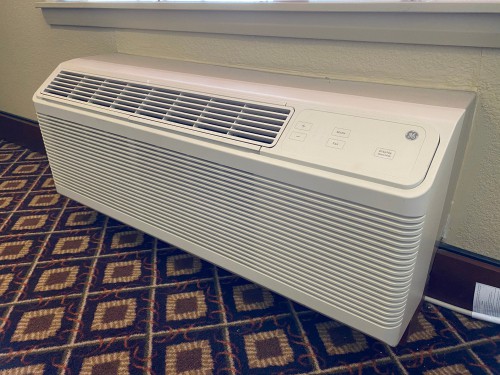Summary:
Common Reasons Your PTAC Stops Heating or Cooling
Most PTAC problems that affect heating and cooling come down to airflow, power, or mechanical issues. The good news is that many of these problems have straightforward solutions.
Before you assume the worst, there are several quick checks that can save you time and money. Understanding what’s happening inside your unit helps you decide whether this is a DIY fix or time to call for PTAC repair service.
Let’s start with the most common culprits that cause PTAC units to lose their heating or cooling power.
Check Your Air Filter and Airflow First
A clogged air filter is the number one reason PTAC units stop working effectively. When the filter gets packed with dust, pet hair, and debris, your unit can’t pull in enough air to heat or cool properly.
Pull out your filter and hold it up to the light. If you can’t see through it clearly, it’s restricting airflow. A dirty filter makes your PTAC work harder while delivering less comfort. It’s like trying to breathe through a pillow.
Replace disposable filters or wash reusable ones with warm, soapy water. Let washable filters dry completely before putting them back. This simple step fixes the problem about 40% of the time.
While you’re at it, check the air vents inside your room. Furniture, curtains, or boxes blocking the intake or output vents create the same problem as a dirty filter. Your PTAC needs clear space around both sides to move air effectively.
Also look at the outdoor side of your unit if you can access it safely. Leaves, debris, or snow blocking the external vents will shut down your system’s ability to exchange heat with the outside air. Clear away any obstructions you can reach safely.
Power and Electrical Issues That Stop PTAC Units
PTAC units need consistent power to run their compressors, fans, and heating elements. If your unit turns on but isn’t heating or cooling, the problem might be electrical rather than mechanical.
Check your circuit breaker first. PTAC units draw significant power, especially when starting up. A tripped breaker will cut power to the heating or cooling components while leaving the fan running. Reset any tripped breakers and see if that restores function.
Look at the unit’s display panel or controls. Error codes, blinking lights, or blank displays often indicate power problems or internal faults. Your owner’s manual will explain what different codes mean, but many electrical issues require professional PTAC service to diagnose safely.
Loose electrical connections inside the unit can cause intermittent problems or complete failure of heating and cooling functions. These connections can work loose over time from vibration and temperature changes. Don’t attempt to tighten electrical connections yourself unless you’re qualified to work with electrical systems.
If your PTAC is older, worn electrical components like contactors, capacitors, or control boards can fail and prevent proper operation. These components are relatively inexpensive, but they require proper diagnosis and installation to avoid safety hazards or damage to other parts of your system.
When Your PTAC Needs Professional Repair Service
Some PTAC problems go beyond basic troubleshooting and require professional expertise. Refrigerant issues, compressor problems, and complex electrical faults need proper tools and training to fix safely.
If you’ve checked the obvious issues and your PTAC still isn’t heating or cooling, it’s time to call for professional PTAC repair. Attempting complex repairs yourself can turn a moderate repair bill into a major replacement cost.
Here’s when to pick up the phone instead of continuing to troubleshoot on your own.
Refrigerant Problems and Compressor Issues
When your PTAC blows air but it’s not cold enough in cooling mode, refrigerant problems are often the culprit. Low refrigerant doesn’t just happen on its own – it means there’s a leak somewhere in the system that needs to be found and repaired.
You might notice ice forming on the indoor coils or copper lines. This happens when low refrigerant causes the remaining refrigerant to get too cold. The ice blocks airflow and makes the problem worse. Don’t try to scrape off the ice or keep running the unit.
Refrigerant work requires EPA certification and specialized equipment. Adding refrigerant without fixing the leak is a temporary fix that wastes money and harms the environment. Professional PTAC service includes leak detection, proper repair, and refrigerant recovery that follows environmental regulations.
Compressor problems show up as units that run but don’t cool, make unusual noises, or trip breakers repeatedly. The compressor is the heart of your PTAC’s cooling system. When it starts failing, you’ll hear grinding, clicking, or squealing sounds that weren’t there before.
A failing compressor often means it’s time to consider PTAC replacement rather than repair, especially on older units. The cost of compressor replacement plus labor often approaches the price of a new, more efficient unit. A qualified technician can help you make the right choice based on your unit’s age, condition, and repair history.
Heating Element and Control System Failures
PTAC heating problems often involve electric heating elements or heat pump components that require professional diagnosis. These systems operate at high temperatures and voltages that can be dangerous to work on without proper training.
Electric heating elements can burn out partially or completely. A partially failed element might produce some heat but not enough to warm your space effectively. You might smell a burning odor when the heat first kicks on, or notice that the unit draws power but doesn’t get warm.
Heat pump PTACs have additional components like reversing valves and defrost controls that can malfunction. These units should automatically switch between heating and cooling modes, but control failures can leave them stuck in one mode or cycling incorrectly.
Control system problems affect how your PTAC responds to thermostat settings. The unit might run constantly without reaching the set temperature, or shut off before the room is comfortable. Modern PTAC units have electronic controls that can fail due to power surges, moisture, or component aging.
Thermostat calibration issues make your PTAC think the room is warmer or cooler than it actually is. This causes short cycling, poor comfort, and higher energy bills. Professional PTAC maintenance includes checking and calibrating temperature sensors to ensure accurate operation.
Don’t ignore unusual sounds, smells, or behavior from your PTAC unit. These early warning signs often indicate problems that are cheaper to fix now than after they cause additional damage to other components.
Getting Your PTAC Back to Peak Performance
Most PTAC problems have solutions, whether it’s a quick filter change or professional repair service. The key is knowing when to troubleshoot yourself and when to call for help.
Start with the simple checks – filters, power, and airflow. These solve many common problems and cost nothing but a few minutes of your time. For anything involving refrigerant, electrical components, or mechanical repairs, professional PTAC service protects your investment and your safety.
When you need expert PTAC repair in Queens, NYC, we have the experience and tools to diagnose problems quickly and fix them right the first time.



